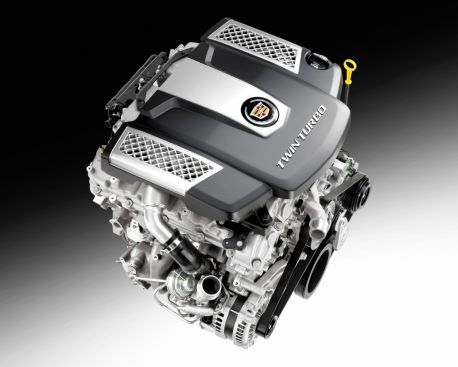 Cadillac is revving up its line-up with a new Twin-Turbo V6 engine that is said to rival anything in the segment.
Cadillac is revving up its line-up with a new Twin-Turbo V6 engine that is said to rival anything in the segment.
The new engine will debut in the all-new 2014 Cadillac CTS midsize luxury sedan, which will be unveiled at the New York Auto Show next week.
A first for Cadillac, the new 3.6-L Twin-Turbo V-6 engine is paired with an eight-speed automatic transmission that enhances fuel economy and acceleration over a six-speed automatic.
The engine has an SAE-certified 420 horsepower and 430 lb.-ft. of torque, making it the most powerful V-6 ever from GM and the most power-dense six-cylinder engine in the midsize luxury segment, according to Cadillac.
“The new Cadillac Twin-Turbo brings a new dimension of technologically advanced performance to the all-new 2014 Cadillac CTS sedan,” said David Leone, executive chief engineer, in a press release statement. “Delivering power and sophistication, it marks another large step forward in the product-driven expansion of Cadillac.”
A pair of smaller turbochargers and a charge air cooler help provide more immediate power delivery. In addition, approximately 90 percent of the 3.6L Twin-Turbo’s peak torque is available from 2,500 rpm to 5,500 rpm, giving the engine a broad torque curve that consumers will feel even during everyday driving situations like accelerating or overtaking traffic on the highway.
The new CTS sedan, which launches this fall in the U.S., will reach 60 mph from a standstill in an estimated 4.6 seconds and achieve an estimated top speed of 170 mph (274 kph).
Cadillac’s new Twin-Turbo V6 engine will also be offered in the 2014 XTS large luxury sedan this fall.


